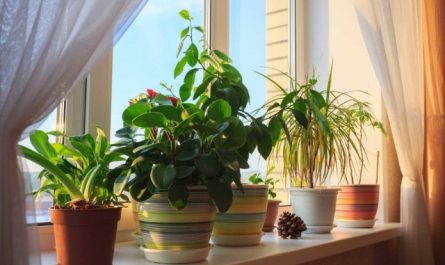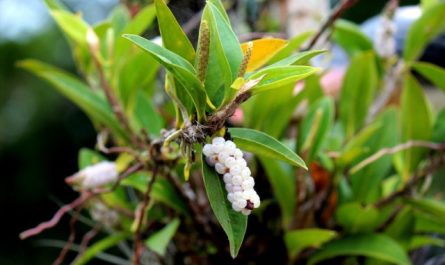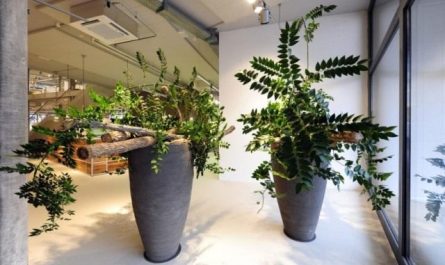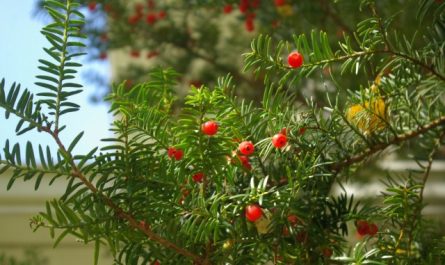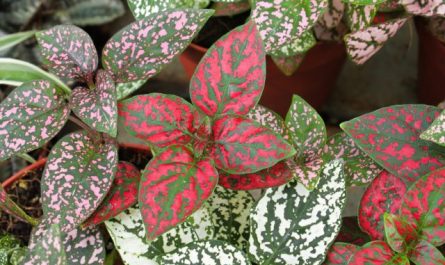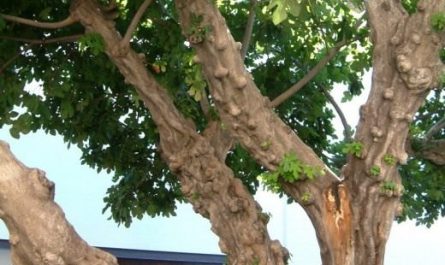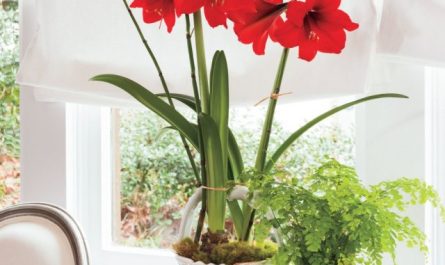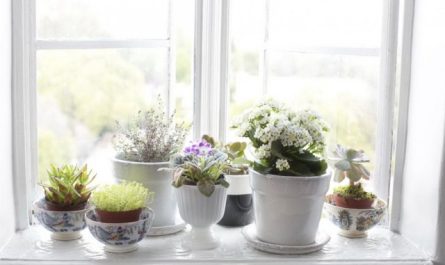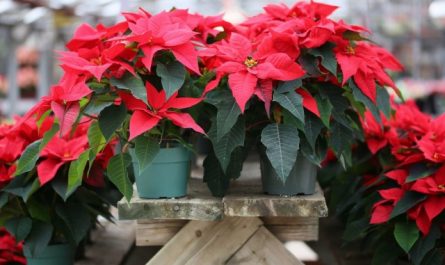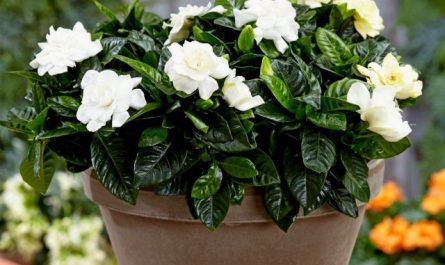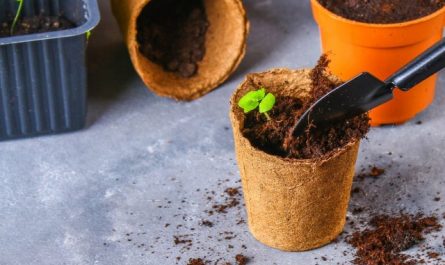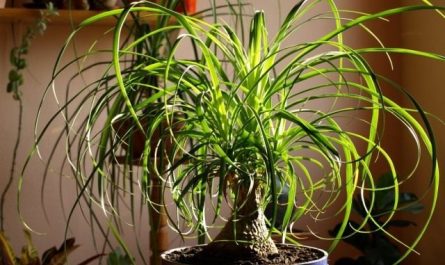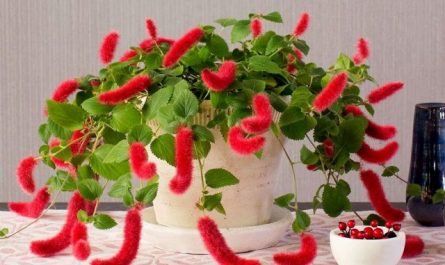Fragrant, shining with noble silver and purple, spicy lavender is a favorite plant of many gardeners. Dried lavender inflorescences are beautiful in bouquets, and in the garden the plant is rightfully considered one of the brightest. But if you love lavender and its aroma and want to admire the bushes constantly, you should try to grow a charming semi-shrub in a room format. This is not the easiest potted plant, it requires attention and care. But during the flowering season and outside of it, indoor lavender enchants with its textures and character.

Lavender – Mediterranean aristocrat in potted format
Lavender is one of those plants that needs no introduction. Having become a true flowering symbol of the Mediterranean, it is still associated with garden design, but is increasingly found in the interiors of coffee shops, restaurants and cozy shops.
Lavender is very much loved even by those who do not have a garden, and they have learned to grow it in a new interior format. It is difficult to call indoor lavender something exotic. They are actively planted in tubs, pots and flower boxes in the plant’s homeland and are used in urban landscaping. So the change of status from a garden plant to a garden and indoor plant was more a matter of time.
room lavender (Lavandula) – all the same herbaceous perennials, subshrubs and shrubs from the family Lamiaceae (Lamiaceae) with a high content of essential oils in all above-ground parts. Their strong shoots, gradually woody from below, and opposite, lanceolate, pubescent leaves in different species and varieties differ in the intensity of the tint in dense, constantly growing bushes. They are recognized as easily as their flowering.
The color of lavender greenery varies from cold and almost emerald to silvery-gray and warm grassy shades. It is possible to choose varieties by it, as well as by the shades of inflorescences. Bushes in rooms, depending on the type, can either grow to almost half a meter in height or remain compact, but they are always very dense and elegant.
Lavender usually blooms in the summer, although indoor lavender can be found blooming on sale already in the spring.
Lavender produces bisexual, small tubular flowers that are collected in small whorls into complex spikelets of inflorescences at the tops of leafless shoots. Quite large gaps between the whorls make lavender spikelets very elegant.
The lavender color range includes all shades of the blue-violet spectrum – from the most delicate and pastel white, light lilac-pink to dark saturated tones.

Variety of indoor lavender
Thanks to the indoor format, it is limited to only the most popular garden plant and the most frost-resistant type of “English” lavender – lavender angustifolia (Lavandula angustifolia) — not at all necessary. Its large, up to 40 cm high in pots, wide and dense bushes in indoor format are compact, and the classic apical spikelets of inflorescences are amazingly fragrant.
The choice of varieties with white, blue, pink and all shades of purple is very large (the color is usually reflected in the name of the variety – Alba, Hidcote Blue, Rosea etc.) But other types of lavender can also be grown indoors.
Lavender latifolia (Lavandula broadleaf), also known as french or lavender butterfly, became famous not so much for its brighter and larger leaves, but for the very beautiful shape of its larger flowers with long bracts. The flowers bloom on tall stems, as if hovering above the greenery. Although not as fragrant, this lavender looks more exotic and bright. Its varieties are predominantly pink-purple.
Most indoor lavenders are hybrid, unnamed varieties that are selected based on the color of their inflorescences. Among them, there are varieties that belong to the so-called lavender hybrid, transitional, or Dutch (Lavandula x intermediate), famous for its spectacular flowering.
They are easily recognized by their larger and more spreading bushes. The leaves of almost all varieties are silvery, and the flowers are larger, in long, spectacular spikelets. You can choose shades of blue, purple and violet colors from the varieties.
Growing conditions for indoor lavender
When moving to pots, lavender becomes much more demanding of both lighting and temperatures. It requires a very complex light regime – sunny and soft – and moderate temperatures, suffers greatly from heat and has prepared another unusual requirement – for ventilation.
It is very difficult to preserve indoor lavender. The bushes wither so often, without even having time to fully bloom, that people do not dare to buy them to decorate interiors. But you can still find a comfortable place for it.



Lighting and placement
Lavender needs good lighting – the best possible. Even the slightest shading or windows facing north or west will be uncomfortable for this plant.
Lavender should be placed in rooms only on eastern, partially southern or southern-facing windowsills. On a southern windowsill, it is better to take care of the dispersion of midday sunlight (the morning and evening sun should still illuminate the plant).
Lavender, thanks to the pubescence on its leaves, can easily withstand any sun, but in a potted format – not heat. And if there is an opportunity to soften the conditions, it is better to use it.
During the dormant period, to maintain the decorativeness of indoor lavender bushes, you need to either provide the plants with additional lighting or move the lavender pots to a more illuminated place (to the southern windows). The main task remains to stabilize the conditions: the lighting for lavender is changed so that it at least partially corresponds to the summer maintenance regime.
For indoor lavender, the minimum duration of daylight that does not affect the beauty of the greenery is 10 hours. On cloudy days, it is advisable to provide additional lighting for the plant.
Temperature conditions and ventilation
Despite its southern origins and garden plant habits, lavender in indoor format is very sensitive to extreme temperatures.
The minimum parameters acceptable for indoor lavender are best specified for each species and even variety of the plant. But usually lavender does not tolerate temperatures below 5 degrees. The cooler the winter, the better the plant is preserved and looks.
But even during the period of active growth and development, especially in summer, indoor lavender will prefer moderate temperatures. Bushes develop and bloom better at a temperature of 18 to 20 degrees, and not in the heat. The heat can only be compensated for by humidifying the air and taking the plant out into the fresh air.
Overheating of containers and substrate is especially dangerous: in hot weather, it is better to additionally protect pots by stabilizing temperatures using an external container, decorative textile “winding”, stands, and immersing containers in large containers with stone chips. After all, overheating of the root system often leads to rapid drying out and death of the plant.
Lavender suffers greatly from overdrying of the air when placed near radiators or air conditioners. The plant tolerates drafts well (but not during flowering) and loves ventilation.
At elevated temperatures, it feels better in the fresh air or near a constantly open window. Indoor lavenders are best taken out into the fresh air in summer. But if the bushes were kept indoors, then a sudden move to the balcony or garden is unacceptable; lavender should be accustomed to an abundance of air gradually, increasing the time spent there each day.

Caring for lavender at home
Capricious and sensitive lavender is a very difficult plant. It should be started by those who like to “play” with it — constantly watch the bushes and adjust the care for it. And those who have the experience to instantly respond to its signals. Both watering and pruning lavender, as well as many other mandatory procedures, are only within the power of experienced gardeners.
Watering and air humidity
Indoor lavender is a plant that is much more capricious about soil moisture than its garden relatives, but does not require strong and abundant watering. Overwatering is more dangerous for lavender than drought. But strong drying of the soil can also cause partial drying of leaves and even shoots in plants that are accustomed to stability.
It is better to clarify what kind of watering the plants are used to when buying. Indoor lavender prefers constant light rather than medium soil moisture. You can allow the substrate to dry out in the upper third (maximum – to the middle of the pots), but it is better to replace the usual abundant watering (frequent or rare), but maintaining constant uniform moisture.
Watering for lavender is significantly reduced during the dormant period, changing along with the decrease in air temperature and adding 1-2 days of “delay” compared to normal summer watering.
The approximate frequency of watering is 1-2 times a week in the summer at moderate temperatures and slightly less than once every 2 weeks in the winter in cool conditions.
There are several nuances to watering lavender that can affect the lushness of the greenery, the rate of aging of the bushes, and the abundance of flowering:
- For indoor lavender, it is very important to choose soft, settled water;
- the water temperature should be similar to or slightly higher than the air temperature in the room;
- It is better to water only in the early morning or evening, especially in the summer, draining the water immediately;
- The condition of the substrate and how dry it is should be checked before each watering procedure (this process can be simplified by installing special indicators or simple automatic watering options).
Lavender does not need high air quality, it grows well in normal rooms, but it does not like dry air either. If the plant suffers from central heating or dry air, the leaves dry out for no apparent reason, then it is worth placing simple humidifiers next to the lavender or carefully spraying water, creating a light mist to compensate for these negative factors. Showering is acceptable for young and non-flowering lavender.
Top dressing and fertilizer composition
Lavender does not require very nutritious soil and, provided it is replanted annually, can go a long time without fertilizing. But if you want the plant to bloom spectacularly and grow actively, you should fertilize it every 2 weeks from spring to autumn.
Lavender can be treated with universal mineral fertilizers for indoor plants, but not with organic fertilizers. In early spring, only nitrogen fertilizers can be used, and during budding and flowering, potassium-phosphorus fertilizers with potassium dominance can be used. The manufacturer’s recommendations are the best strategy when choosing the concentration of fertilizers.
Pruning and shaping lavender
The main rule for pruning any narrow-leaved lavender is the prohibition on cutting off woody parts: pruning even on indoor bushes should be carried out 1-2 nodes above the beginning of the growth zone.
The main pruning of lavender is carried out after flowering has finished, removing not just individual faded parts of the shoots, but slightly trimming the cushion of greenery and shortening the stems to “start” the process of tillering and active growth.
Repeated pruning and rejuvenation of lavender is carried out in early spring. Spring pruning is carried out in the same way as pruning after flowering, but much lower: approximately one third of the shoot height or maintaining the specified height of the bush. Usually, compact varieties of lavender are cut at a height of about 15 cm. Thinning with the removal of old shoots starts the process of rejuvenation of the bush. If lavender loses much of its decorative effect, you can leave only 2-5 shoots.
Sanitary cleaning from dry branches and additional pruning on drying shoots or bushes with loss of decorativeness in the lower part can be safely carried out throughout the growing season. Lavender tolerates pruning well, renewing itself each time.
Despite regular pruning, it is better to replace the bushes every 5-6 years. Of course, provided that the lavender can be preserved during this time, because the plant is extremely capricious.

Transplantation, containers and substrate
Lavender in indoor format very actively grows roots and requires annual replanting. When the roots completely fill the earthen lump, the growth of the above-ground parts stops and does not resume until the rest period in the cool.
For lavender, it is worth choosing containers that allow a powerful and quite “garden” root system to develop normally, although much more compact than that of other perennials. The minimum diameter of containers in which indoor lavender is grown when using garden plants, and not purchased “indoor” ones, is considered to be 30 cm and a container volume of 2 liters.
When replanting, pots are selected so that the roots can develop freely until the end of the season. The depth should exceed the diameter of the pots. Lavender feels better in natural “breathing” containers, not in plastic. The holes for water drainage should be either numerous or large.
It is better to transplant lavender at the very beginning of active growth, but with proper care, increased air humidity and moderate temperatures, it can be transplanted at any time – even while in bloom.
Selecting a substrate for lavender is not an easy task. It needs light, loose, breathable soil. The use of universal ready-made substrates is acceptable, but only with a complex soil composition and with the obligatory addition of fine gravel, stone chips, coarse sand, perlite or inert soils to create an ideal texture.
If you have the opportunity to make the soil mixture yourself, you can mix turf soil with humus and rock-sand additives in a ratio of 2:1:1 or use a simple peat-sand substrate with crushed stone additives. Even a slight acidic reaction is unacceptable, lavender prefers slightly alkaline rather than neutral soils. You can adjust the pH with wood ash and special additives.
When planting lavender, a middle drainage layer of large fragmentary materials is laid. This crop grows better with drainage of shards, stones, gravel, crushed stone. Lavender is carefully rolled over, preserving the soil lump completely and not contacting the roots.
Diseases, pests and problems in growing lavender
Indoor lavender is much more vulnerable to pests and diseases than garden lavender. Spider mites love it, fungal diseases are common on it, powdery mildew and even late blight bother the bushes. Any problems must be dealt with not only by adjusting the conditions of keeping these plants, but also by using complex insecticides and fungicides.
But problems related to uncomfortable conditions are much more common. Lavender reacts to any deviations – sometimes not at all obvious – in the same way – by drying up. Sometimes leaves, sometimes only parts of them, sometimes whole branches or inflorescences. If the bushes are withering, it is worth checking each of the possible reasons:
- lighting and daylight hours;
- air and substrate temperatures, possible overheating;
- air humidity and severe air drying;
- access to fresh air;
- water temperature for irrigation;
- quality of irrigation and deviations from light soil moisture;
- soil permeability and compaction;
- filling the substrate with roots (if the rhizome has nowhere to develop, the plant stops growing, flowering, begins to dry out and even when replanted is restored only after a period of rest).

Reproduction of lavender
Indoor lavender is propagated in the same way as garden lavender. You can buy divisions or seedlings of garden plants, adapting them to the indoor format. You can buy lavender already accustomed to pots in flower shops and garden centers, order rare, non-wintering species and varieties in the middle zone. Or you can grow lavender yourself.
Growing from seeds is far from the optimal method, because often the characteristics of the plants differ greatly from what is expected, and sowing requires some tricks. Lavender seeds are stratified by keeping them at a temperature of about 5 degrees for 4-8 weeks, and then sowing is carried out according to the same rules as when sowing any garden annuals or perennials.
Lavender is sown in a loose, light soil mixture, in low containers, with a light covering of sifted soil to a depth of no more than 2 mm. Under film or glass, in diffused light, with stable light humidity, the seedlings are kept at room temperatures.
Plants are dived after the release of the 5th-6th leaf, several pieces in small pots. Lavender loves coolness and uniform soil moisture at this stage of development, preferring a temperature of 15 to 20 degrees, rather than heat.
Increased air humidity and very light soil moisture accelerate the development of seedlings. Formation begins after reaching a height of 6-8 cm by pinching the tops, stimulating the release of lateral branches. Before the formation of full-fledged bushes, young lavender responds well to pruning.
The easiest and fastest method of propagation for indoor lavender that gives results – thick, beautiful and neat bushes – is cuttings. It is enough to cut annual shoots from garden or indoor plants (green in spring or semi-woody in summer and autumn), preparing classic apical and stem cuttings about 10 cm long. They are planted in a moist substrate, under a cap and kept until rooting at room temperatures, maintaining uniform soil moisture.
The division is carried out on old or lost decorative bushes of indoor lavender, and you can also, if desired, transfer garden bushes to a pot format. In the first option, the division is carried out in the spring, during transplantation, dividing large bushes into 2-3 parts.
Garden lavender should be prepared in the fall – carefully cutting the bush, hilling it twice (after division and in the spring) and digging up the divisions only the following fall or spring. Some of them are used for the garden, and the most compact and strong ones are planted in pots.
Lavender easily takes root when shoots come into contact with the soil. This property is used to obtain a large number of seedlings and to renew old bushes in the garden. By fixing a layer – a strong side shoot – in the soil, maintaining constant humidity, you can get independent bushes ready for separation the following year.
For indoor lavender, this method is used only when growing plants in groups or in large containers, but separating cuttings from garden plants for transfer to a new format is very simple.
